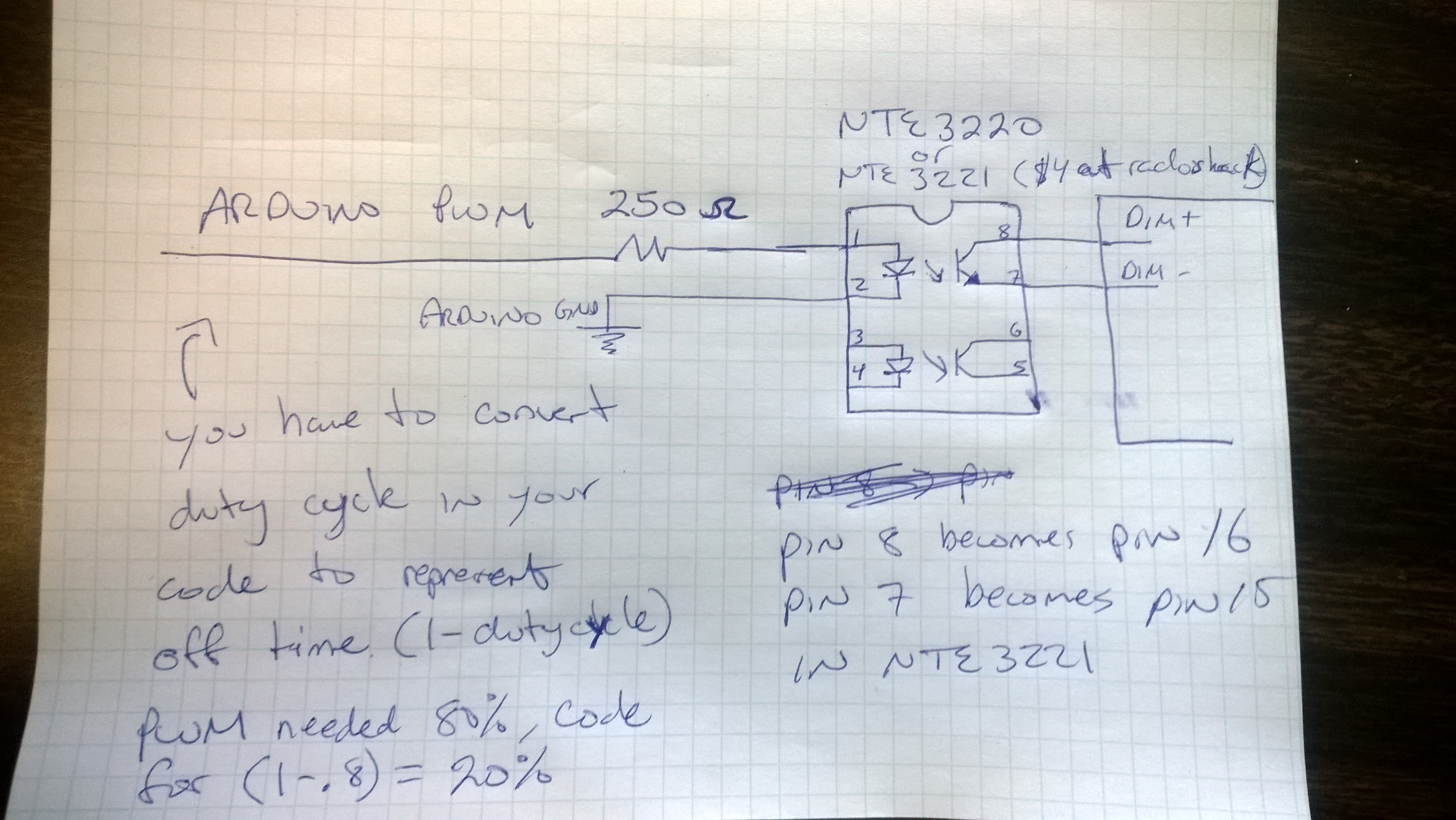"1. Arduino Nano $25, ebay
2. 6 channels digital potentiometer
(10K, 255steps, 0-5V) buy more than 3, you will need it as it can easily be fried.
3.
Low Power Op-Amp, you can buy some high power one as well, but it doesn't matter
4.
500mA transistor, I used it, but it got hot real hot real quick when I put more than 100mA on it, so I would recommend
higher power ones.
5. A whole bunch of equal resistors (10k or 100k)
That's all there is to the 0-10V controller. Here are the basic steps.
1. The digital potentiometer is driven by the Arduino via SPI (3 wires connection to the Arduino), you can look at the SPI potentiometer example on the Arduino program. The pot has 6 channels and each channels has 255 steps. 0 = 0V and 255 = 5V when powered by a 5V source. It is VERY VERY VERY important that you power this chip with only 5V or you will fried it! Trust me, I fried 2 or them. Luckily I ordered 5.
2. The digital pot output to the op-amp is driven by a 12V source. The opamp multiply the voltages to 10V using 2 identical resistor to the "-" of the opamp. I will post schematic tomorrow. DO NOT POWERED anything off of this 10V, it is very little current as it is only signal. You may *caution* get by with powering the ELN----D with this, but monitor how hot the opamp get and measure the actual voltage. To be safe, I would suggest going to step 3.
3. The output from the opamp go to the "Base" of the transistor (would recommend getting the higher power one), the return signal to the opamp from the resistor is the emitter with a resistor.
Again, electrical diagram to follow tomorrow. This will give you a clean linear 0-10V signal and whatever current you can run through the transistor. In addition, you only use 2pwm (pin 10,11) and 1 clock (pin 13) from the arduino but you get 6 channels out."
source
[/QUOTE)


 here
here


